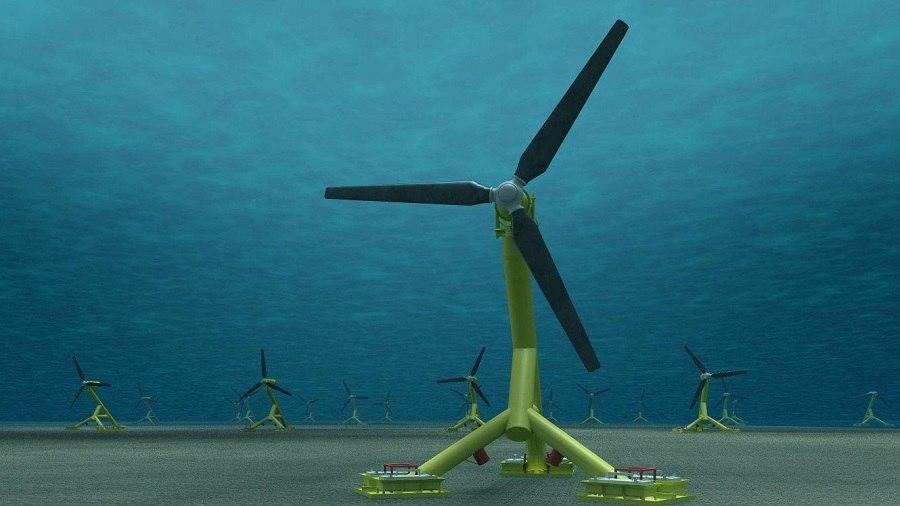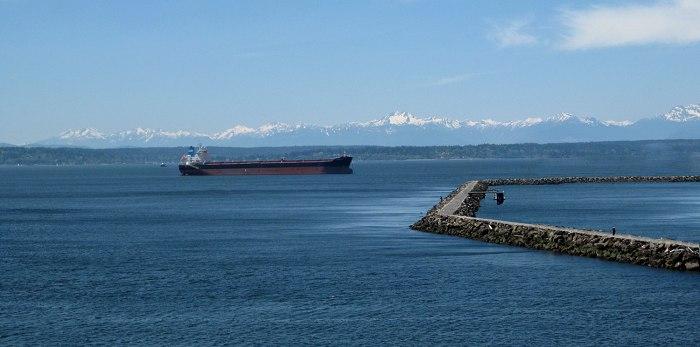How does tidal energy work? In this article from Linquip, we will discuss this matter and tell you all you need to know about tidal power. Tidal powers are an amazing source that has the potential to be used to create electricity since the way they behave can be better predicted compared to the sun and the wind. That’s why it is important to know how tidal energy works and its uses of tidal energy.
What exactly is tidal energy?
Tidal energy is a renewable source of energy that comes from changing sea levels. The tide of the sea changes levels from high to low and from low to high, creating a sort of energy that has the potential to be used for different purposes. One of the great things about Tide is that it’s constant and almost predictable. You can compare it to the sun and the wind; considering both disappear for a while and are not constant.
How does tidal energy work?
To use this energy, we should harness tidal energy with the help of systems that contain turbines. These systems have blades that rotate multiple times (around 12 to 18 times per minute). This rotation depends on the strength of the tide. The gearbox that’s connected to the system works as a converter, creating electricity from the tidal energy. This energy then is used for different purposes.
Experts have come up with three main ways of harnessing tidal power. These ways are tidal turbines, tidal barrages, and tidal lagoons.
-
Tidal barrages
Tidal barrages are one of the three ways you can harness the tidal energy from the sea levels. These barrages are similar to the Dams that are used in hydroelectric plants. The difference between them is that tidal barrages are larger than Dams. These barrages are built across the bay or estuary. This harnessing way works in places where the difference between low and high tide is more than five meters. This number is also known as the tidal range.
How tidal energy works in the tidal barrage harnessing technique is that when the tide comes, the water enters the basin through the dam, and then when it stops, the entrance is then closed, which keeps the water inside. While closing, the turbines located inside the dam open up and the water flows through these turbines, resulting in the generation of energy.
The disadvantage of this harnessing type is that it takes a long time to create these barrages and they also damage the local environment. Plus, creating them and their infrastructure costs a lot.
-
Tidal Turbines
These turbines are like the systems we use to harness the power of the wind (wind turbines). Tidal turbines have shorter blades compared to wind turbines; these blades are also stronger than them. How does tidal energy work in this turbine type? Well, a tidal turbine is underwater; tides move the turbine, resulting in the activation of a generator. This generator is responsible for producing electricity.
Tidal turbines are great for places with big and strong tides. These turbines are still new to the industry but they can be used for great achievements. Just like tidal barrages, these systems also have a high upfront cost. But they are cheaper than the previous item. The installation and maintenance of tidal turbines are high, but they have less environmental impact which is considered as a plus point for this type of harnessing tidal energy.
-
Tidal Lagoons
How does tidal energy work when using tidal lagoons? If you are curious about them, you should know that they are very similar to tidal barrages. But compared to them, they are more affordable and have a lower impact on the local environment. When the tide rises, the water flows into them and when the tide lowers down, the contained water will enter a turbine. This turbine, then, creates electricity.
Disadvantages and Advantages of tidal energy
There are many advantages and disadvantages when it comes to using tidal energy. They have a very promising future to supply our electricity demand, but for now, here are some pros and cons:
Pros
- Tides are predictable and reliable, that’s why they are considered to be a better source of energy compared to sun and wind energy.
- Tidal energy is a renewable energy source that’s not going to end anytime soon.
- They come and go twice a day and their predictability can come in handy to avoid wasting extra time and energy for them.
- Harnessing tidal energy doesn’t produce emissions.
Cons
- They can only produce electricity for up to ten hours a day. That’s because they can only generate this electricity when the tides come and go (flow in or out of the system.) But keep that in mind that estimations show that the best locations that have strong tides can provide enough tidal energy to power a turbine for eighteen to twenty-two hours a day.
- Strong waves and currents may damage the equipment. Plus, repair costs are high.
- The upfront costs of the systems that harness tidal energy are high and there should be massive concrete construction and strong infrastructure for most of the schemes.
- They may damage the aquatic ecosystem.
- Maintenance costs for these systems are currently high. This is one of the great reasons that is stopping us from building them all around the world at suitable places.
Now you know everything about how tidal energy works. As we mentioned above, they are really expensive but they have a promising future; so, do you think in the future they will become the main source to supply our electrical needs? Comment below and share your thoughts with us. And if you have any questions about tidal power, feel free to sign up on our website and our experts will be right with you to provide you with the answers based on the latest findings.
Buy Equipment or Ask for a Service
By using Linquip RFQ Service, you can expect to receive quotations from various suppliers across multiple industries and regions.
Click Here to Request a Quotation From Suppliers and Service Providers
Read More On Linquip
- What Is Tidal Energy? A Simple and Comprehensive Review
- Tidal Energy Diagram: The Story of Tidal Power Based on Diagrams
- Disadvantages of Tidal Energy: A Detailed Guide
- Advantages of Tidal Energy ։ A Useful Guide
- Is Tidal Energy Renewable? A Complete Answer
- What is Osmotic Power?




